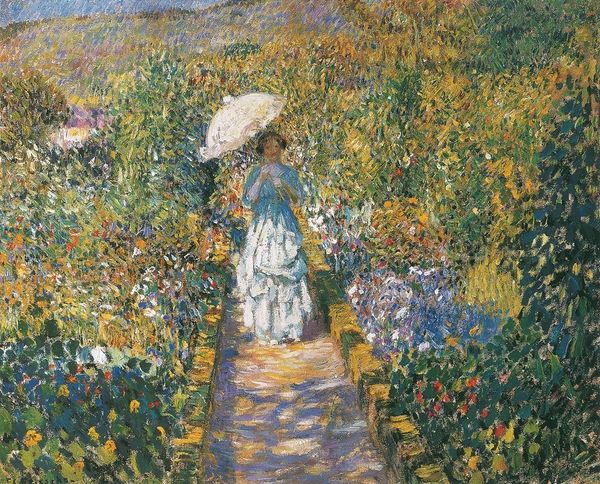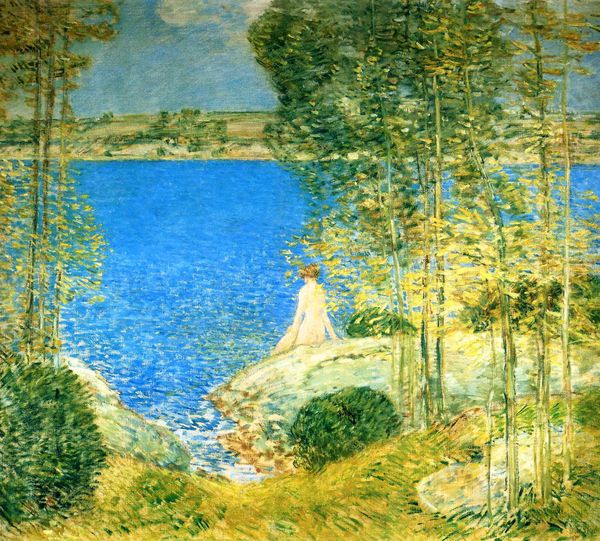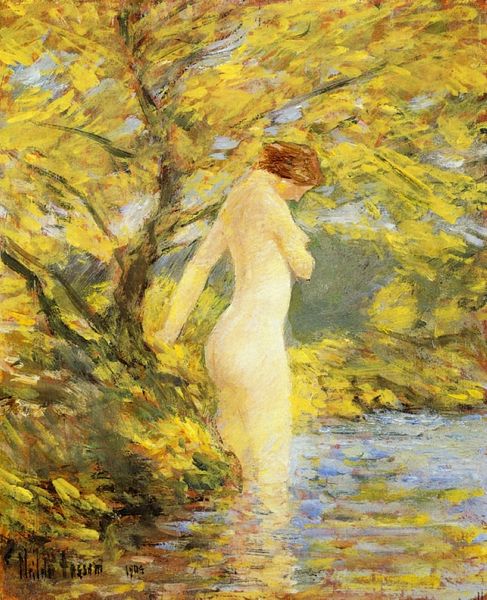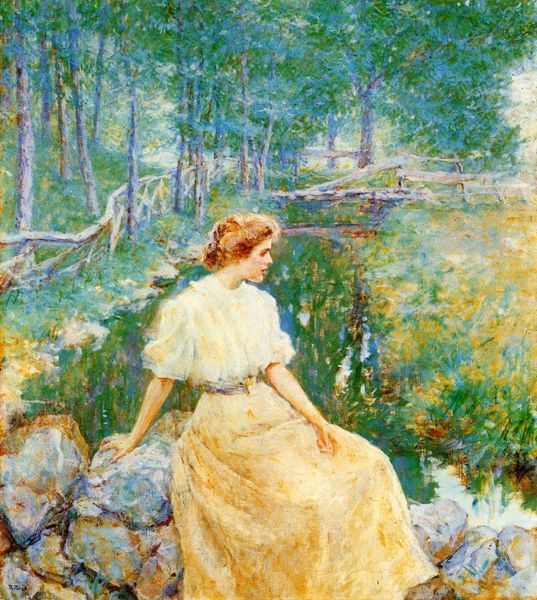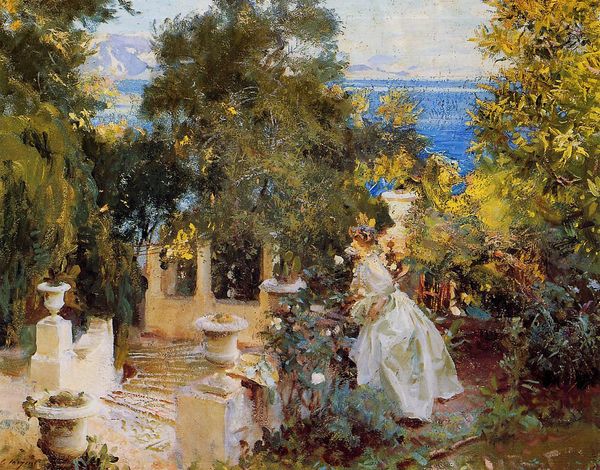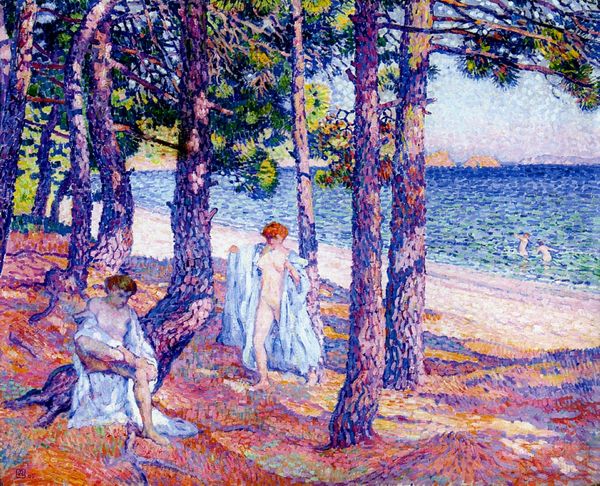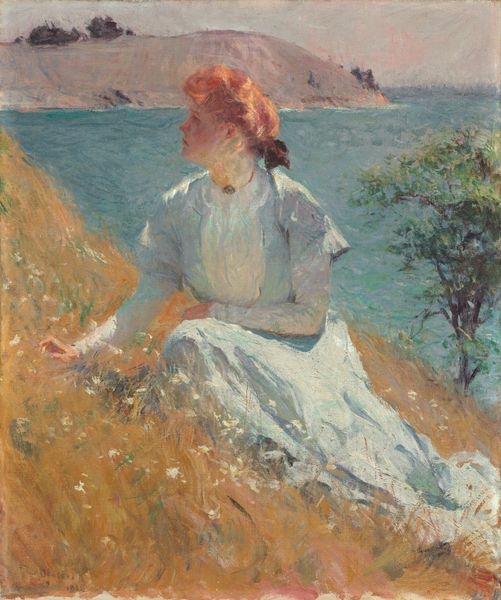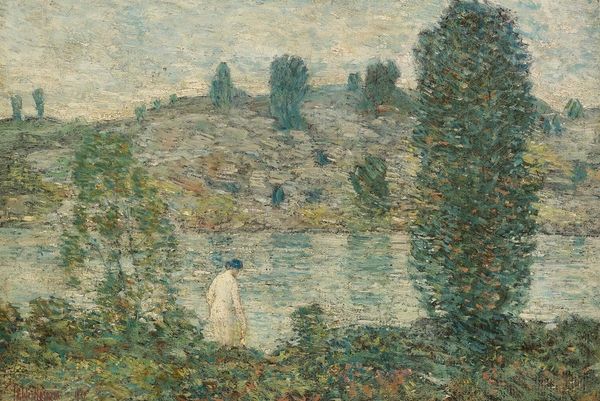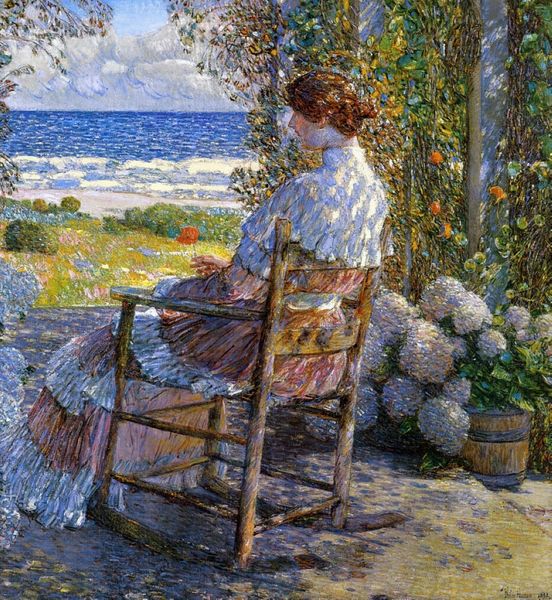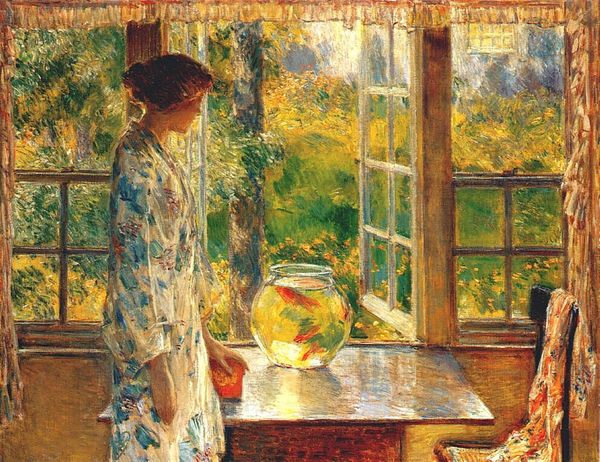
Copyright: Public domain
Curator: Hassam’s “Listening to the Orchard Oriole,” painted in 1902, offers a captivating scene rendered in oil on canvas. Editor: It feels immediately serene. The dappled light, the way the figure blends with the natural setting...it's quite calming. Curator: Absolutely. The artist was heavily involved in Impressionism; you can really see that manifest in the broken brushstrokes and the concentration on capturing fleeting moments of light and color. How do you view its materiality? Editor: Considering it was likely painted en plein air, there’s a real sense of immediacy, as if the paint itself is recording the environment—the sun, the humidity. What’s interesting to me is picturing Hassam at work; you can feel him responding to nature while creating the work in nature itself. Did the process mirror other Impressionists? Curator: Indeed. Impressionists valued that direct experience. You’ll note how the structure itself appears somewhat loose—more about capturing an impression rather than adhering to strict lines or perspective, with almost uniform distribution of focus and detail. See how he builds layers and depth through those delicate, separate strokes, inviting the eye to create cohesion and sense? It almost dissolves form rather than definitively creates it. Editor: It brings into question ideas around the artist’s presence too. Instead of thinking of the art object alone, it prompts thinking about art’s production—that laboring, lived engagement to the scene through specific materials in a real time and place. This makes the Hudson River school feel particularly vital as it engaged with American material culture at that time. Curator: I concur, even down to the patterned fabric that merges her into her environment, her presence less portrait and more pattern within pattern, mirroring nature. And observe how, rather than a hard definition, the figure of the woman seems built entirely of a mass of colors and tones… quite lovely. Editor: I agree. The method feels radical: labor transformed through material observation to sensory experience itself. Curator: Precisely! Thinking about Hassam, “Listening to the Orchard Oriole” exemplifies the pure impression, translated into structural visual elements with superb craft. Editor: Yes, it truly makes us consider the active processes inherent in its creation.
Comments
No comments
Be the first to comment and join the conversation on the ultimate creative platform.
